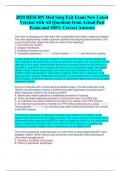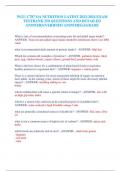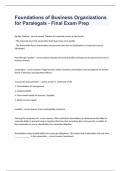Exam (elaborations)
2024 HESI RN Med Surg Exit Exam New Latest Version with All Questions from Actual Past Exam and 100% Correct Answers
- Course
- Institution
2024 HESI RN Med Surg Exit Exam New Latest Version with All Questions from Actual Past Exam and 100% Correct Answers
[Show more]






